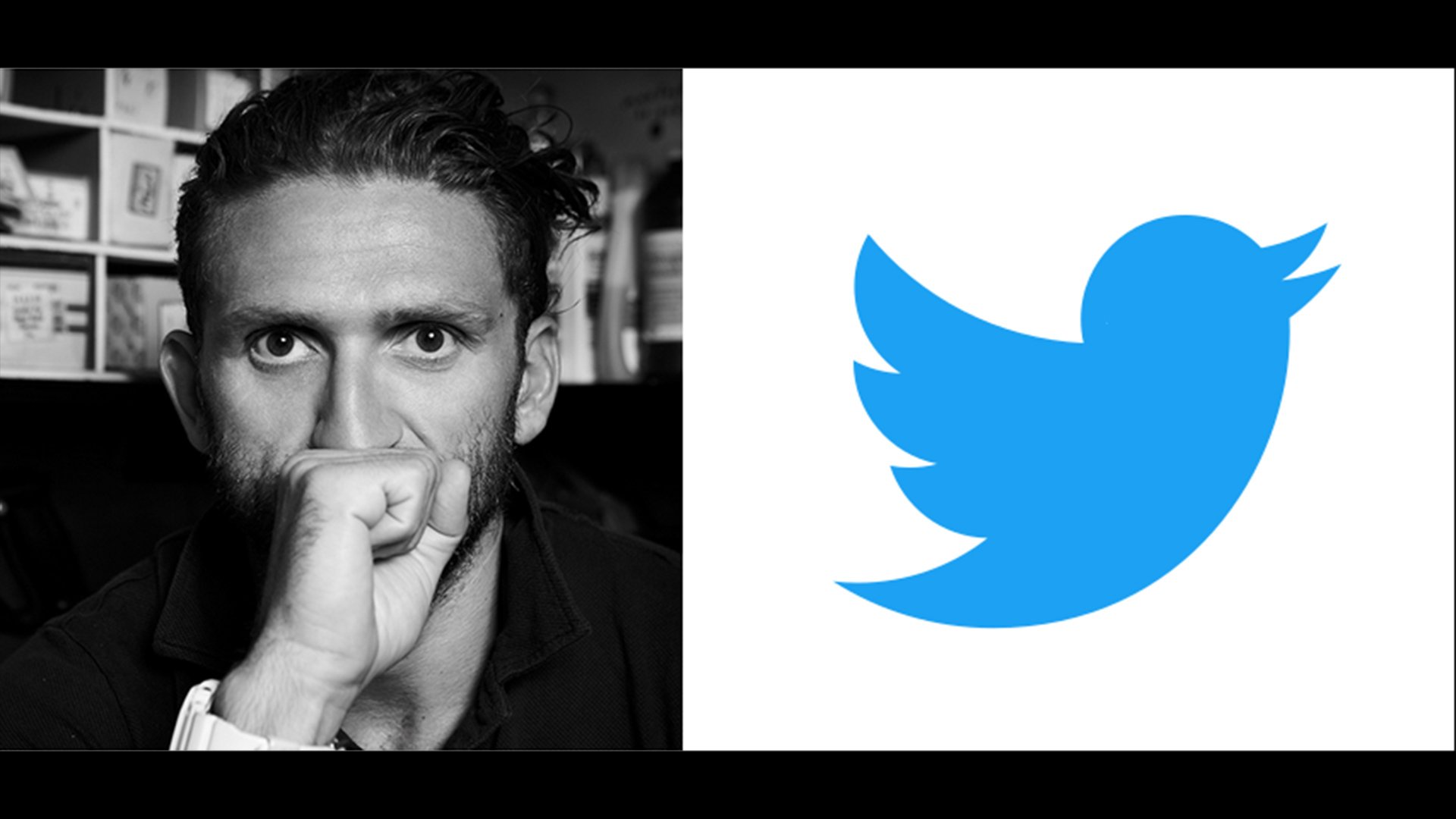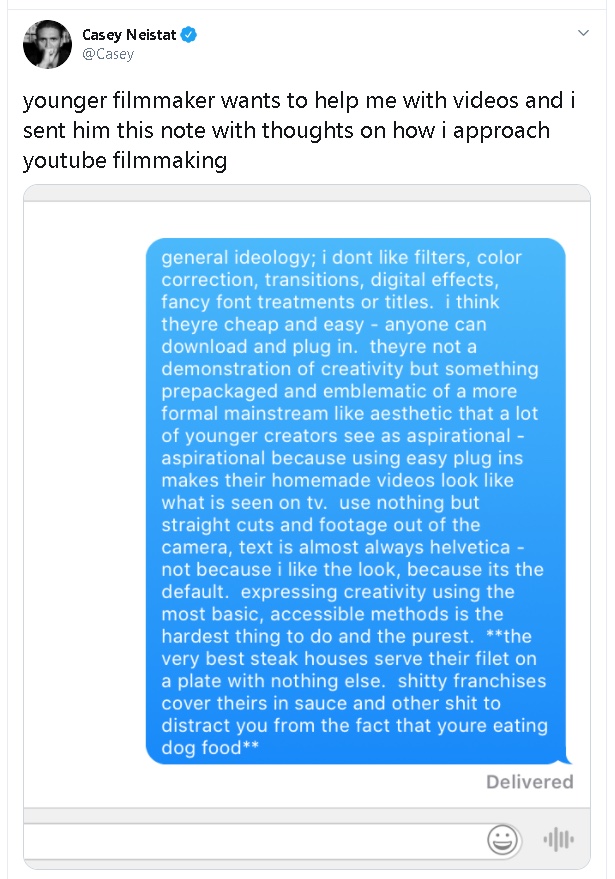
Replay: YouTube filmmaking superstar Casey Neistat recently (at the time of original publication) handed out some raw, real advice to a young filmmaker and caused a stir.
Last week, I saw a really good Tweet posted by Casey Neistat. Have a read below.

The tweet blew up. For some people like myself, it’s the best piece of advice I’ve seen in a long, long time. For others, it was sacrilege. An outrage. How could this loud-mouthed American YouTuber have the audacity to dismiss and sweep away the important details of filters, colour grading and everything in between?
I was inspired to dive into this a little bit more and offer my viewpoint. I know, you didn’t ask. But I think it’s great to discuss these things and debate within the industry.
So, firstly, before you become enraged by this dismissal of everything that’s so important to filmmaking, I think it’s important to have a bit of context here. There are a million ways to be creative and make beautiful videos and films. What works for one filmmaker does not work for another. This is Casey Neistat’s ideology for his own (very unique) style and his own way of working. It’s also important to remember that this is advice being given to a young filmmaker who’s on the learning curve and just getting started.
This is why I think it's so good. If he were sending this message to someone who’s already been working in the industry for 15 years, it might not ring as true as it does for those learning the ropes (although I would argue it’s still relevant).
Don't be distracted
Essentially, what I interpret this as is Neistat warning that at some point, too many of us risk getting our heads turned and distracted by the fancy transitions, the nice colour grades, which text works best, and should I use this filter or that filter? We may fall into the trap of thinking that by using these things, we are making great films. We may be led to believe that these tools are shortcuts to success.
And who can blame us? Particularly if you’re self-taught like myself, utilising YouTube as a learning resource. So many educational videos within the ecosystem of YouTube filmmaking tend to glorify transitions, colour grades and all the rest. We’ve all seen the clickable titles and thumbnails: ‘5 QUICK HACKS FOR PREMIERE PRO’ and ‘COLOUR GRADING MADE EASY’. Those ‘cheap and easy’ tools that ‘anyone can download and plug in’.
Even as we grow and work through our careers, we are all guilty of sometimes having our head turned by the new latest piece of gear. There’s always something that we need to buy or upgrade on.
Casey is telling this young filmmaker that before they do anything else, they need to get their head down and focus hard on becoming a good storyteller. At the end of the day, all filmmaking boils down to one thing - storytelling. To make a film is to tell a story. There is absolutely no point in worrying about what sauces and sides (the transitions, the colour grades and filters etc) to serve with your steak (the basic film and story) if that steak is, quite frankly, crap.
That’s why, in my opinion, this is such good advice. When getting started, every single filmmaker out there should be thinking of nothing more than how to make the story as strong as it can possibly be. Once your steak is perfect and you’re a master on the grill, only then can you begin to think about your sauce and sides.
Don't rush perfection
Bear with me here whilst I draw a random comparison. In the 2011 documentary ‘Jiro Dreams of Sushi’ (a great watch), there is a similar scenario at play. The chefs and apprentices who are just getting started in Jiro’s sushi restaurant work there for 10 years before they’re allowed to even cook an egg. 10 years! And after that, it may be another 10 years before they can move on to the next stage. The idea is that you can't rush perfection and the reality is that it takes many, many years to perfect a craft and really hone in on a skill.

Now, back to our Casey Neistat advice and the things that got people really riled up. If you were to read this once and you ignore the context and take it at face value (as so many did), you would rightly laugh and say that it’s rubbish. How dare he dismiss so many vital components of all great filmmaking.
The reality is that your colour grade is truly important. It evokes emotion and silently conveys key messages to your audience. The transitions you use really do matter. A filter can make all the difference between a shot being average and a shot being great. Digital effects and the right font can really add a shine and polish to your production that take it to the next level. Every great filmmaker still needs to learn about these important components and eventually master them. There’s no disputing that.
They matter. However, only once you’ve got a good story in place. Alongside the steak metaphor, I’ll give you another one. What’s the most important thing when it comes to building a house? The foundations and the ground on which everything else is built. There’s no point in having a beautiful building with fancy windows if the foundations are shaky.
Shut everything else out and get back to basics. Get good at telling your story first.
What are your thoughts on this? Is it good advice, or do you disagree? We want to hear it!
Tags: Production


Comments